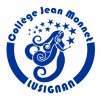informations sur la République Tchèque publié le 26/09/2007 - mis à jour le 26/02/2008
Proposed visits and activities
Kladno
Kladno is the largest city of the Central Bohemian Region, together with its adjacent suburban areas forming an agglomeration of more than 110,000 inhabitants, situated in the close vicinity of Prague, the capital of the Czech Republic. Kladno was the historical birthplace of Bohemian heavy industries in the past and now it is a city of dynamics, advanced and sophisticated technologies, green vegetation, sport and modern lifestyle.
Praha
Prague (Praha), is the capital and largest city of the Czech Republic. Situated on the River Vltava in central Bohemia, Prague has been the political, cultural, and economic center of the Czech state for over 1100 years. The city proper is home to nearly 1.2 million people, while its metropolitan area is estimated to have a population of over 1.9 million.
Prague is widely considered to be one of the most beautiful cities in Europe and belongs to the most visited cities on the continent. Since 1992, the historic centre of Prague has been included in the UNESCO list of World Heritage Sites. Nicknames for Prague have included „the mother of cities“ („Praga mater urbium“), „city of a hundred spires“ and „the golden city“.
Čabárna & Aves
water park with animals ; centre for handicaped birds
http://www.volny.cz/zachr.stanice
Mayrau open-air miners’ museum
The unique Open-air Miners’ Museum Mayrau, in the village of Vinařice near Kladno opens to visitors this former mine, opened in 1874, as a vivid experience of the history of coal-mining in the Kladno region.
This rare historically preserved locale encapsulates the irreplaceable atmosphere of the mining traditions and as an open air museum tries to recreate the beginning of a miner’s typical working day. The tour leads the visitors through the chain changing room, pithead baths, the lamp store and identity disc check in area finally arriving at the Mayrau mineshaft.
Koněprusy caves
http://www.caves.cz/jeskyne.php?jazyk=UK&jeskyne=KON
The caves are situated in Central Bohemia, 7 km South of Beroun, in the middle of the nature reserve of Czech Karst, not far from castles Křivoklát and Karlštejn. The caves were discovered in 1950 and made accessible for the public in 1959.
The caves are developed in 400 milion years old Devonian limestones, consist of three levels to be found 70 m under the ground-level and over 2 km long. The accessible part is 590 m long and sightseeing tour lasts one hour.
The top level housed in the 15th century a secret workshop of money forgers. The cave can boast of unique opal-bearing decorations, as well as numerous paleonthological exavations, documenting the history of earth Nature of the past 1,5 milion years.
Lidice memorial and museum
http://www.lidice-memorial.cz/default_en.aspx
The intention of Lidice Memorial is to take care of permanent preservation of the remembrance of the town of Lidice and the suffering of its residents who in 10.6.1942 became the victims of Nazi violence and to keep the name of the Lidice village as The world’s symbol of all victims of war crimes.
Nowadays visitors of memorial Lidice can watch a 20 minute long documentary film about the burning down of Lidice and visit the reverent area with important places - witnesses of the tragedy in Lidice and newly built Memorial of young victims of war by the sculptors Marie Uchytilova and Jiri Vaclav Hampl. Details about this sculpture can be found on The history of The war children’s victims monument.
St. Barbara Church in Kutná Hora
http://www.kutnahora.cz/index.php?sec=3&cid=61&scs=3
The St. Barbara Church is one of the most famous Gothic churches in the central Europe. It is in the World Heritage Sites. Its first architect is usually claimed to be Johann Parler.
Inside you can admire beautiful glass windows, altars, pulpits and choir stalls, and there are also medieval frescoes depicting the secular life of medieval mining town of the city. The outside appearance is fascinating, although the final work on the roof was made in the 19th century. Originally there were eight radial chapels with trapezoidal interiors. Later on, there was constructed the choir, supported with double-arched fliying buttresses.
The construction began in 1388, but the work on the cathedral was interrupted several times, so that the final work was completed in 1905. According to the original proposals the church seems to have been planned to be much larger, maybe twice as big as it is now. But the construction of it depended on the prosperity of the silver mines in the town. So in 1588, although not finished, it was enclosed by a provisional wall until 1884.

